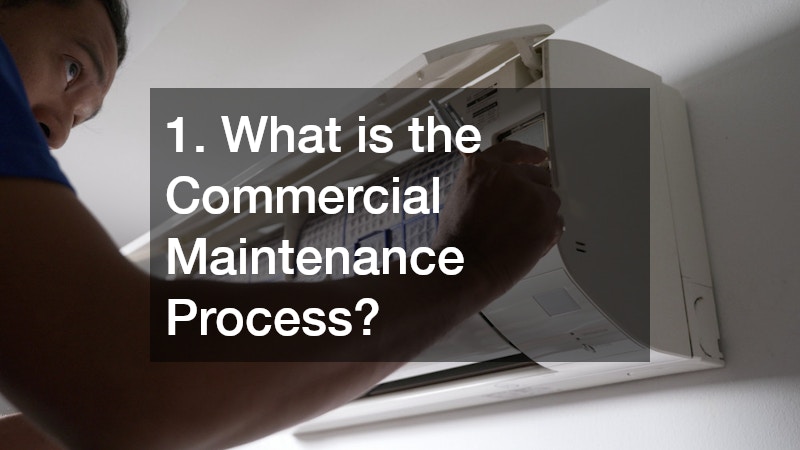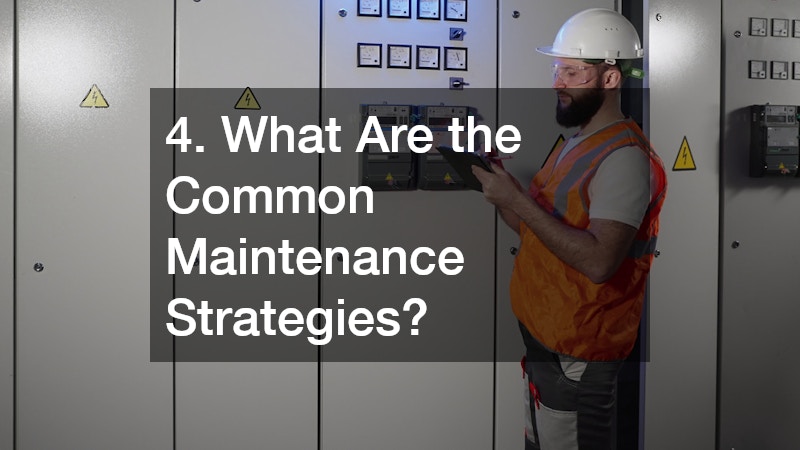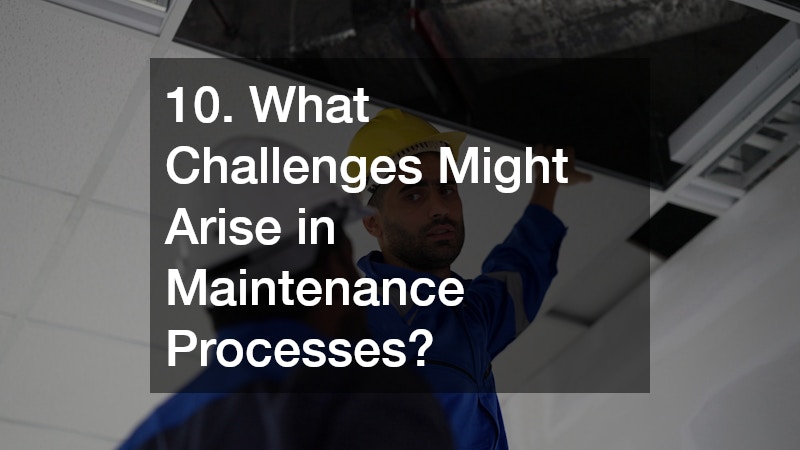Every commercial property, whether it’s a retail store, office complex, warehouse, or industrial facility, represents a substantial investment. Owners and managers understand that the long-term value of these assets doesn’t just depend on location or construction quality—it also hinges on how well the property is maintained over time. Without a structured and consistent commercial maintenance process, even the most modern facilities can deteriorate quickly, leading to costly repairs, safety hazards, and diminished asset value.
The commercial maintenance process is more than just responding to broken equipment or leaky roofs. It is a proactive system of inspection, upkeep, and repair designed to ensure that every component of a building continues to operate at peak performance. From HVAC systems and electrical wiring to roofing, plumbing, and general cleanliness, every part of a property contributes to safety, efficiency, and asset preservation.
A strong maintenance program also provides intangible benefits, such as creating a welcoming environment for employees, clients, or tenants, and demonstrating professionalism. For students of entrepreneurship, property managers, and business owners alike, understanding the importance of maintenance is not optional—it is a fundamental part of protecting investments.
This article explores why the commercial maintenance process is essential for long-term asset protection. We’ll look at what it entails, why it matters, and how businesses can develop effective maintenance strategies that balance costs, safety, and performance.
1. What is the Commercial Maintenance Process?

The commercial maintenance process refers to the organized approach of managing and caring for commercial properties to ensure their longevity and efficiency. It covers all aspects of building upkeep, from structural integrity to energy systems and aesthetics. Unlike residential upkeep, commercial maintenance is often more complex because it involves compliance with stricter safety codes, higher usage demands, and multiple stakeholders.
An industrial electrical company plays a key role in this process. For example, electrical systems in commercial properties must support larger loads, handle emergency power, and integrate with security or IT networks. Scheduled inspections by certified electricians reduce the risk of electrical fires, power outages, or system failures that could halt business operations.
In addition to electrical work, commercial maintenance also encompasses HVAC servicing, plumbing checks, roofing inspections, painting, landscaping, and pest control. By adopting a structured maintenance framework, property owners ensure that all aspects of the facility receive attention at appropriate intervals, preventing small problems from snowballing into major expenses.
Ultimately, the process is about protecting the investment, extending the building’s lifespan, and creating a safe, productive space for its users.
2. How Does Maintenance Process Impact Asset Longevity?
Asset longevity is directly tied to the quality and frequency of maintenance. A commercial building that receives consistent care can serve its purpose for decades, while one neglected may face premature deterioration. Every part of a building—whether it’s the roof, windows, flooring, or internal systems—has a predictable lifespan, which can be significantly extended through regular upkeep.
For example, windows exposed to environmental stress need periodic inspection and cleaning. Window cleaning services don’t just improve appearance; they also prevent long-term glass etching from pollutants and extend the life of window frames by catching early signs of rot or corrosion. This protects both aesthetics and structural performance.
Similarly, regular HVAC tune-ups extend the life of heating and cooling systems by reducing wear and tear on motors and fans. Plumbing inspections can identify leaks before they damage foundations or cause mold infestations. Roofing maintenance can add years to a roof’s service life, preventing the need for costly replacements.
In this sense, the maintenance process acts like preventive healthcare for assets. By addressing small issues early, businesses avoid catastrophic failures, minimize downtime, and maximize the usable lifespan of their facilities.
3. Why is Regular Maintenance Important?
Some business owners view maintenance as an expense rather than an investment. However, entrepreneurs quickly learn that regular maintenance is a cost-saving strategy. A neglected commercial property may appear to save money in the short term, but deferred repairs often snowball into expensive emergencies.
Imagine an entrepreneur leasing office space for a startup. If the landlord skips routine HVAC maintenance, the system could fail in the middle of summer, disrupting operations, reducing employee productivity, and damaging client relationships. The repair costs would likely exceed the savings from skipped servicing.
Regular maintenance also plays a key role in safety and liability management. Businesses must provide safe environments for employees, tenants, and customers. Failing to repair broken handrails, replace burnt-out lights, or service elevators could lead to accidents—and lawsuits.
Beyond cost and safety, regular maintenance reflects professionalism. A well-kept building signals reliability, attracts clients, and boosts employee morale. Conversely, neglected spaces create negative impressions and can drive away tenants or customers.
In short, regular maintenance is not optional; it is the backbone of long-term asset protection and business credibility.
4. What Are the Common Maintenance Strategies?

Businesses and property managers typically use one of several maintenance strategies, depending on budget, industry, and facility needs. The most common include:
- Preventive Maintenance – Scheduled inspections and servicing designed to prevent breakdowns (e.g., quarterly HVAC tune-ups, annual roof inspections).
- Corrective Maintenance – Addressing problems after they occur, such as fixing a broken pipe or repairing a malfunctioning elevator.
- Predictive Maintenance – Using technology to monitor equipment performance and predict failures before they happen (e.g., sensors that detect motor vibration).
- Routine Maintenance – Daily or weekly tasks like cleaning, landscaping, and minor repairs that keep facilities functional and appealing.
From a business perspective, preventive and predictive strategies are the most cost-effective. While corrective maintenance may seem cheaper upfront, relying solely on it often leads to higher costs over time.
The best organizations adopt a hybrid model, blending preventive, routine, and predictive practices to ensure comprehensive coverage. This approach balances costs with reliability and extends the life of critical systems.
5. How to Develop a Maintenance Plan?
A successful maintenance process requires a clear, structured plan. Without one, businesses risk inconsistent execution, oversights, and wasted resources. Developing an effective plan involves several steps:
- Assessment of Assets – Create an inventory of all systems, equipment, and structural components that require maintenance.
- Prioritization – Rank assets based on importance, usage, and risk of failure. For instance, HVAC and electrical systems may take priority over landscaping.
- Scheduling – Establish maintenance timelines (monthly, quarterly, annual) for each asset.
- Budgeting – Allocate funds for both preventive maintenance and potential emergency repairs.
- Partner Selection – Work with trusted contractors such as commercial roofers for specialized tasks like roof inspection and repair.
- Monitoring and Adjustment – Track maintenance activities and adjust the plan as assets age or building usage changes.
A documented plan ensures accountability and makes it easier to measure performance. It also protects businesses from unexpected disruptions, giving them the confidence that critical systems are regularly monitored and maintained.
6. What Role Does Technology Play in Maintenance?
Modern technology has revolutionized the commercial maintenance process. Today’s property managers have access to advanced tools that improve efficiency, accuracy, and predictive power.
For example, access control installation systems not only provide security but also reduce wear and tear by regulating building access. Similarly, smart building technologies integrate HVAC, lighting, and energy systems, allowing real-time monitoring and automated adjustments to reduce energy waste and equipment stress.
Computerized Maintenance Management Systems (CMMS) are increasingly popular. These digital platforms help track work orders, schedule preventive tasks, and store asset histories. This data-driven approach allows managers to identify recurring issues, allocate resources more efficiently, and forecast future repair costs.
Predictive analytics tools are another breakthrough. Sensors on equipment can detect unusual vibrations, temperature changes, or energy spikes—warning signs of impending failure. With this information, maintenance teams can intervene early, avoiding costly breakdowns and extending equipment life.
Technology not only reduces costs but also enhances safety, compliance, and sustainability. Forward-thinking businesses that adopt digital maintenance tools are better positioned to protect their assets long term.
7. How to Train Maintenance Personnel Effectively?

Even the most advanced maintenance plan fails without skilled personnel to implement it. Training maintenance staff ensures tasks are performed correctly, safely, and consistently.
First, personnel need a solid understanding of building systems, from electrical circuits to plumbing and HVAC. Specialized training, often provided by vendors or certification bodies, ensures technicians stay current with industry standards. For example, professionals trained in windows and doors installation and repair can identify subtle issues like warped frames or seal failures that an untrained eye might miss.
Safety training is equally vital. Maintenance work often involves hazardous conditions, such as working at heights, handling chemicals, or operating heavy machinery. Regular safety workshops reduce the risk of accidents and keep teams compliant with occupational regulations.
Cross-training is another valuable strategy. By equipping staff with diverse skills, businesses reduce reliance on external contractors for routine tasks and ensure that operations continue smoothly, even if key personnel are unavailable.
Investing in personnel training is not just about efficiency—it’s about creating a culture of professionalism, accountability, and safety that directly supports asset longevity.
8. What Are the Costs Involved in Regular Maintenance?
Budgeting for maintenance is a crucial aspect of commercial property management. While the costs may seem high initially, they are far lower than the expenses of emergency repairs or premature replacements.
Routine tasks such as landscaping, HVAC servicing, and plumbing companies inspections may represent predictable monthly or annual costs. For example, a commercial plumbing inspection might cost a few hundred dollars, but repairing major water damage from a burst pipe could run into tens of thousands.
Larger projects, such as roof replacement or major electrical upgrades, require significant capital but are often spread over long timeframes with proper preventive care. Business owners should set aside a percentage of rental income or operating revenue each year to cover these expenses.
In addition to direct costs, indirect expenses—such as downtime during repairs or reduced tenant satisfaction—must also be considered. A structured maintenance plan reduces both direct and indirect costs, turning maintenance into an investment in stability and risk management rather than a burden.
9. How to Measure the Effectiveness of Maintenance Programs?
The success of a maintenance program cannot be assumed; it must be measured. Metrics provide insight into whether the strategy is protecting assets effectively and delivering value for money.
Key performance indicators (KPIs) include:
- Equipment Downtime – Reduced downtime suggests effective preventive measures.
- Cost of Emergency Repairs – A decline in unexpected expenses indicates stronger asset management.
- Energy Consumption – Lower utility bills reflect efficient building systems.
- Tenant or Employee Satisfaction – Feedback highlights the impact of maintenance on comfort and usability.
- Compliance Records – Fewer code violations signal adherence to regulations.
For example, a paving company may assess the durability of asphalt maintenance programs by tracking crack repair frequency over time. Similarly, property managers can monitor HVAC system performance by analyzing repair intervals and energy usage.
Regularly reviewing these metrics allows businesses to refine their plans, allocate resources better, and demonstrate the tangible benefits of maintenance to stakeholders.
10. What Challenges Might Arise in Maintenance Processes?

Despite its importance, the commercial maintenance process comes with challenges. These can include:
- Budget Constraints – Limited funds often force managers to delay or scale back maintenance, increasing long-term costs.
- Unplanned Breakdowns – Even with preventive care, unexpected issues can arise, disrupting operations.
- Scheduling Conflicts – Coordinating repairs without interfering with business activities can be difficult.
- Compliance Requirements – Staying updated on local building codes, fire safety regulations, and environmental laws can be complex.
- Environmental Factors – Weather, pests, and natural wear all accelerate deterioration.
For instance, a commercial power washer may solve issues like dirt buildup or graffiti, but frequent cleaning may still be necessary in high-traffic areas. Similarly, roof damage from storms may require emergency repairs despite regular inspections.
Overcoming these challenges requires flexibility, proper budgeting, and reliance on professional contractors. Strong planning and the integration of technology also help minimize risks and ensure continuity.
The commercial maintenance process is not simply about fixing problems—it is about protecting assets, preserving value, and ensuring long-term functionality. A well-structured approach combines preventive care, trained personnel, and modern technology to reduce risks, control costs, and extend the lifespan of critical systems.
From industrial electrical services and plumbing companies to commercial roofers and window specialists, professional support is essential in managing the diverse needs of a property. While challenges exist, the benefits of maintenance—safety, cost savings, and asset preservation—far outweigh the obstacles.



